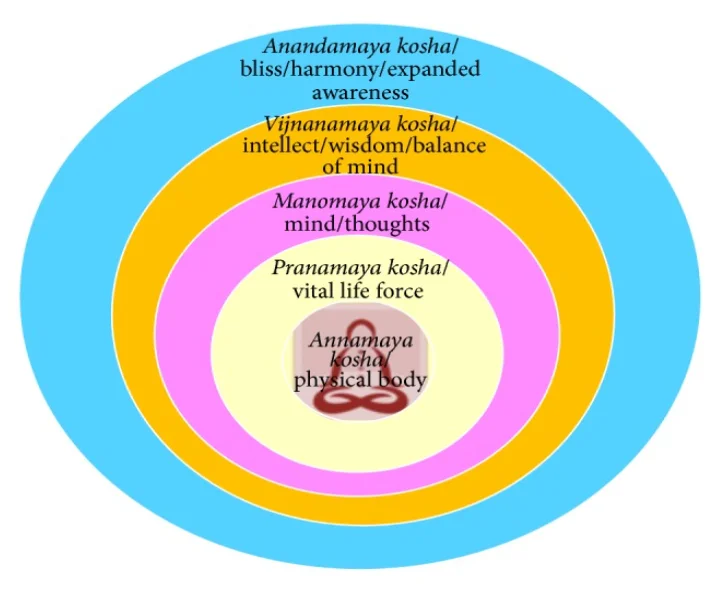Yogic perspective to health and disease
Yoga is an ancient system used to harmonize the body mind and soul.
It is defined as that which brings in ‘Samatvam’, meaning equanimity at physical and mental levels. Yoga also emphasizes on healthy diet and lifestyle with its principles of ahara, vihara, vichara and achara. The one who practices yoga attains success irrespective of their age, diseases or weak. Yoga improves health for all provided we follow the rules and regulations.
Concept of Panchakosha: Acknowledgement: Kavuri et al., 2015

The text Yoga Vasista says that the concept of ‘Adhija vyadhi’ explains about the diseases originating from the mind and ‘Anadhija Vyadhi’ explains about the diseases which do not arise from mind. The duality of likes-dislikes, love-hatred etc. which govern human emotions start creating imbalance at the level of manomaya kosha and when intensify cause “Adhi’s”.
The pathophysiology of a disease in yogic approach is understood through the concept of ‘Adhi’. These concepts are helpful in understanding the modern day psychosomatic illnesses and disorders.
Acharya Patanjali has provided the most comprehensive description of the five stress producing factors called Kleshas.
Avidyāsmitārāgadveṣābhiniveśāḥ kleśāḥ ||
(Patanjali yoga sutra. chapter2/3)
The kleśās are: Avidya (ignorance) asmita (ego) raga (desire) dwesha (dislike) and abhiniveshaha (fear of change).
The fivefold kleshas are responsible for the onset of dukha (pain) which may be physical or mental. Diseases are considered as dukkha.
Yoga therapy is an intervention used in the management of health problems with various components of Yoga such as loosening practices (shithilikarana vyayama), postures(asana), regulated breathing (pranayama), relaxation, meditation, diet, code of conduct and philosophy. It is based on the principles of Panchakosha (five sheaths of human existence) drawn from the Taittiriya Upanishad.
Article By :
Dr.Vasudha sharma





